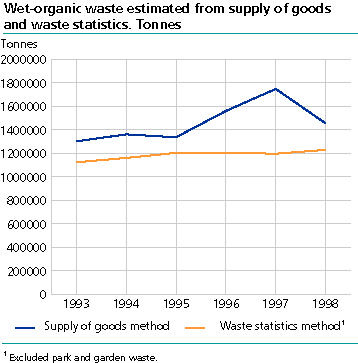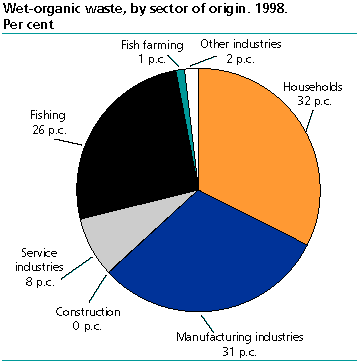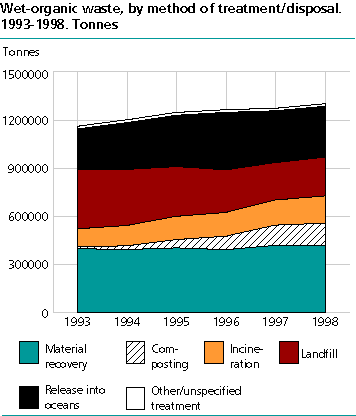Content
Published:
More composted, less landfilled
About 1.3 million tonnes of wet-organic waste were generated in Norway in 1998, according to available waste statistics. 32 per cent of this arose in households, corresponding to 95 kg per capita. 90 per cent of the wet-organic waste is generated in households, manufacturing or fisheries.
Wet-organic waste consists largely of discarded food and feeding stuff. Calculations based on agricultural statistics, fishery statistics and external trade statistics indicate that the actual amount generated may be somewhat higher, about 1.5 million tonnes. The annual amounts have increased slightly during the 1990-ies.
An increasing percentage of the waste is composted, and less is landfilled. Recycling of wet-organic waste has increased slightly during the period. Recycling activities imclude first and foremost production of feeding stuff, but also glue and cosmetics.
Large amounts of fish waste are dumped from fishing boats into the ocean, but this waste is relatively quickly eaten by birds, predator fish or sea animals. It is therefore considered that dumping of fish waste into oceans do not represent serious environmental problems.
Tables:
The statistics is published with Waste accounts.
Contact
-
Statistics Norway's Information Centre
E-mail: informasjon@ssb.no
tel.: (+47) 21 09 46 42



